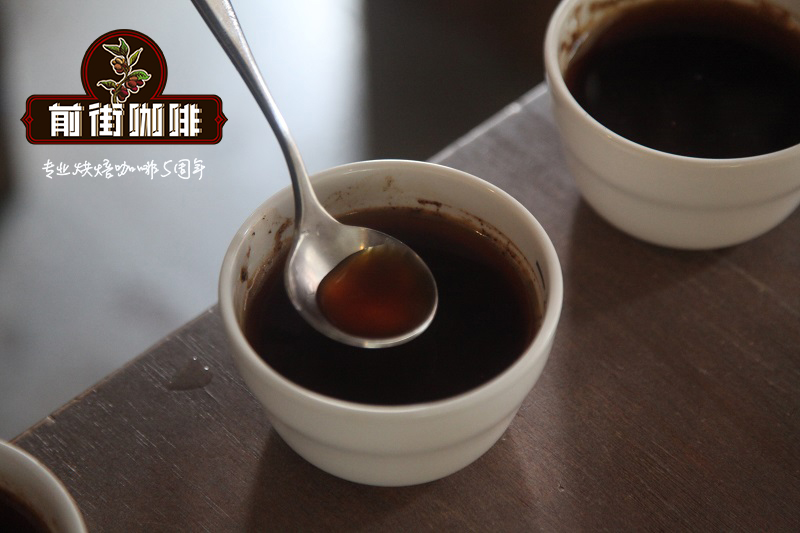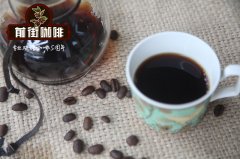Introduction to the characteristics of low-caffeine coffee beans treated with water in Xilado, Brazil _ how to make Brazilian low-caffeine coffee beans

Professional coffee knowledge exchange more coffee bean information please follow the coffee workshop (Wechat official account cafe_style)
Brazil is located in the southeast of South America, located in the tropics and subtropics, the unique geographical and climatic conditions are suitable for growing coffee. Brazilian coffee is famous all over the world for its high quality and strong flavor. it is the largest coffee producer and exporter in the world, and is known as "coffee kingdom".
Brazil Syrador Coffee beans: Cerrado Syrador is a producing area. Cerrado Syrador coffee beans are treated by Brazilian traditional pulp natural drying (Pulped Natural). Because coffee beans are dried with pulp (Pulp) and pectin (Mucilage), they retain high contents of organic matter, minerals and soluble solids. This kind of coffee beans has a strong aroma, slightly sweet with the flavor of Qiaokoli, as well as the sour taste of citric acid, which is not easy to detect, with a moderate taste and a long finish.
Brazilian Hilado coffee beans feature:
Aroma: the fragrance temperature and softness give people an elegant impression as a whole.
Taste: like aroma, the taste of Brazilian coffee is mild and elegant, low acidity coffee, smooth and balanced taste.
Decaffeinated coffee refers to coffee with only a small amount of caffeine. Coffee contains many ingredients and substances, among which caffeine has an obvious effect on the human body. For many people who are addicted to coffee but whose physical condition does not allow caffeine, decaf is a better choice.
What kind of coffee is decaf coffee?
Generally speaking, it is coffee that removes more than 90% of the caffeine before it is called "decaf coffee", or "decaf coffee" for short. In general, Arabica beans contain 1.1 to 1.7 percent caffeine, while robusta beans contain 2 to 4.5 percent caffeine. What's the concept? take the store's Mantenin coffee bean G1 as an example, which has a caffeine test value of 1.43%, compared with 1.32% in Colombia.
Decaf coffee is generally considered to contain no more than 0.3% caffeine, which means that a cup of decaf coffee contains no more than 5 milligrams of caffeine. Sibaku's Brazilian low-caffeine coffee has a caffeine test of 0.0342%, which is much lower than the caffeine content of normal coffee.
At present, the commonly used international method to remove caffeine from coffee beans is the Swiss water treatment, which is the low-caffeine treatment used in our Brazilian low-caffeinated coffee.
Swiss water treatment method: there are two major steps in using this commercially developed and efficient treatment method.
The first step is to pour the raw coffee beans into hot water, which will remove almost all the flavor factors in the raw coffee beans, including caffeine, and discard the original batch of raw coffee beans.
The second step is to load hot water with all flavor factors and filter out caffeine with activated carbon filter, and the rest is hot water full of pure flavor factors, which is called "flavor-loaded water" in Swiss water treatment. this water contains all the flavor factors that should be found in raw coffee beans, but lacks caffeine, and this special water is the most important medium in the next decaffeinated process.
A new batch of raw coffee beans soaked in water full of flavor factors and non-caffeine will release caffeine in raw coffee beans, but will not release flavor factors. In this way, the original flavor of raw coffee beans will not be impaired too much. Obviously, the flavor factor in the flavor-loaded water is already close to saturation, so it can no longer dissolve more flavor factors, but there is still a lot of room to dissolve caffeine. After this process of removing caffeine and retaining flavor factors, raw coffee beans are dried and sold directly, while the flavor that absorbs caffeine is filled with water, which can be removed by activated carbon filter over and over again.
In retrospect, if you look back at this Brazilian water-treated low-caffeine raw bean, it will be darker in color than the general non-low-ingredient raw bean, and it smells like plum. Of course, if it is purely about appearance, it is really ugly, and it will have some defects in taste compared to the same coffee with non-inferior factors. As the saying goes, you can't have both fish and bear's paw. Since decaf is more needed, you have to give up the flavor. )
The first of the above two pictures is Brazilian decaf coffee treated by Swiss water treatment. You can compare the color with the second regular Brazilian yellow bourbon. This Brazilian decaf has a round taste, weak acidity, obvious dry and wet aromas but not strong aromas, with a hint of black chocolate at the base of the tongue and moderate bitterness. This coffee is recommended to have a thicker scale when grinding to make it taste better.
Brazilian low-caffeine coffee is recommended to use hand brewing, French pressure pot, Ailo pressure, are very suitable tools. It is recommended that the water temperature of hand flushing should be controlled between 90 and 92 degrees in summer.
END
Important Notice :
前街咖啡 FrontStreet Coffee has moved to new addredd:
FrontStreet Coffee Address: 315,Donghua East Road,GuangZhou
Tel:020 38364473
- Prev

What kind of coffee is illy Brazil Datela Sweet Congregation? What's so special about sun-dried beans at Datra Manor?
Professional coffee knowledge exchange more coffee bean information please follow the coffee workshop (Wechat official account cafe_style) Brazil Coffee-Datra Sweet Collection (Rainforest Certification) Brazil Daterra Sweet Collection country: Brazil Brazil Manor: Datra Manor treatment: refined treatment Organic Certification Variety: Arabica altitude: 1150 meters Datra Manor is located
- Next

Is Brazil Santos NO.2 coffee beans good? why Brazilian coffee beans don't have NO.1?
Professional coffee knowledge exchange more coffee bean information Please pay attention to the coffee workshop (Wechat official account cafe_style) from the Brazilian coffee producing region Santos, the Chinese translation is Santos, Santos, Santos Santos, located in the state of Sao Paulo, Brazil, is a seaport city known as Santos is not produced here, but the coffee beans exported through this port.
Related
- Detailed explanation of Jadeite planting Land in Panamanian Jadeite Manor introduction to the grading system of Jadeite competitive bidding, Red bid, Green bid and Rose Summer
- Story of Coffee planting in Brenka region of Costa Rica Stonehenge Manor anaerobic heavy honey treatment of flavor mouth
- What's on the barrel of Blue Mountain Coffee beans?
- Can American coffee also pull flowers? How to use hot American style to pull out a good-looking pattern?
- Can you make a cold extract with coffee beans? What is the right proportion for cold-extracted coffee formula?
- Indonesian PWN Gold Mandrine Coffee Origin Features Flavor How to Chong? Mandolin coffee is American.
- A brief introduction to the flavor characteristics of Brazilian yellow bourbon coffee beans
- What is the effect of different water quality on the flavor of cold-extracted coffee? What kind of water is best for brewing coffee?
- Why do you think of Rose Summer whenever you mention Panamanian coffee?
- Introduction to the characteristics of authentic blue mountain coffee bean producing areas? What is the CIB Coffee Authority in Jamaica?

